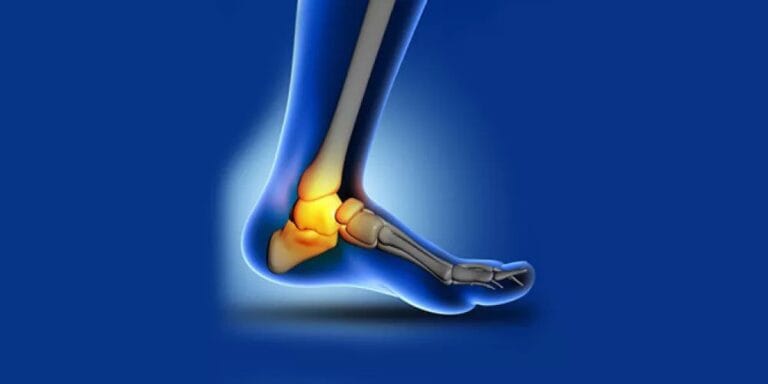Remember to start slow and if things don’t improve, ask your doctor about more advanced solutions
Arthritis in your ankles has many causes. You might develop ankle arthritis after a fracture, as a consequence of rheumatoid arthritis, psoriasis or another cause. Or, you might have degenerative arthritis due to a cause that may never be known.
Regardless of the cause, the end result is thinning of the protective joint surface cartilage, which produces bone-on-bone friction. This leads to inflammation, which causes pain.
The pain from arthritis causes stiffness, swelling and difficulty walking. You may have problems getting up from a seated position, or moving around first thing in the morning. You also may have difficulty trying to walk on steps, ramps or uneven surfaces.
Treating arthritic ankles
Treatment for ankle arthritis depends on the extent of your symptoms.
Initial treatment begins with modifying your activities, strengthening the muscles around your ankles, practicing balance exercises and taking anti-inflammatory medicines.
If you’re carrying some extra pounds, losing weight can help. You also might try a cane for the hand opposite the hurting ankle to alleviate pressure on the affected joint. Shoes that have a rocker or convex sole can decrease forces on your ankle.
If you’ve been diagnosed with inflammatory arthritis, medication management is essential. Compression sleeves and braces that you can purchase at the drugstore also may help.
Custom braces that eliminate motion and take pressure off the ankle often are the next step in treatment.
Lastly, injections of cortisone, hyaluronic acid, platelet-rich plasma or more recently stem cells may be helpful.
If all of these conservative approaches are unsuccessful, surgery may be the best option. For moderate arthritis, debridement and reconstructive procedures may be helpful. There are two types of surgery for end stage ankle arthritis; ankle fusion (arthrodesis) and total ankle replacement.
Ankle fusion
Ankle fusion, also called arthrodesis, is the most time-tested method of surgery.
This procedure involves removing what is left of the cartilage, aligning the ankle at 90 degrees, and placing screws or a plate to hold the joint in place so the body can grow a bone bridge across the joint.
The hardware is rarely removed, but only necessary until the fusion is solid. The concept is that once the fusion is solid, the pain is gone.
This procedure sacrifices motion for pain relief. You can walk well, without a limp with fusion surgery. Rocker shoes can sometimes make this even easier.
The surgery is ideally suited for a patient who has a significant deformity, excessive bone loss, poor ligaments, poor bone quality, previous infection, marked obesity or nerve damage indicated by poor muscle strength or lack of sensation. In addition, once you are fused the likelihood of further surgery is minimal.
The results from ankle fusion are good, with more than 90% of patients reporting that they are satisfied.
Total ankle replacement
Total ankle replacement (TAR) involves resurfacing the weight-bearing parts of the ankle joint where bones come together.
A metal component is placed on the ankle’s upper bone and a matching metal component is secured to the lower bone. Between these components is a polyethylene liner that helps the ankle glide through its range of motion.
The advantage of TAR is that you can move your ankle after the procedure and enjoy more normal ankle function.
If you have arthritis at adjacent joints in the foot, TAR also can be helpful to alleviate stress on these joints, as opposed to a fusion which may increase these stresses.
The ideal candidate for TAR is someone with good bone quality, normal tendons and ligaments, reasonable alignment and normal neurologic function.
What we don’t know about TAR is how long the implants will last. Studies at 10 years post-procedure look good right now. If an ankle replacement fails, you may be able to have a revision surgery or you may have the opportunity to convert to a fusion procedure.
If you have ankle arthritis, it’s best to proceed with conservative management first. If this fails and your quality of life is compromised, make an appointment with a foot and ankle specialist who also specializes in the aforementioned surgical procedures so you fully understand your options.





